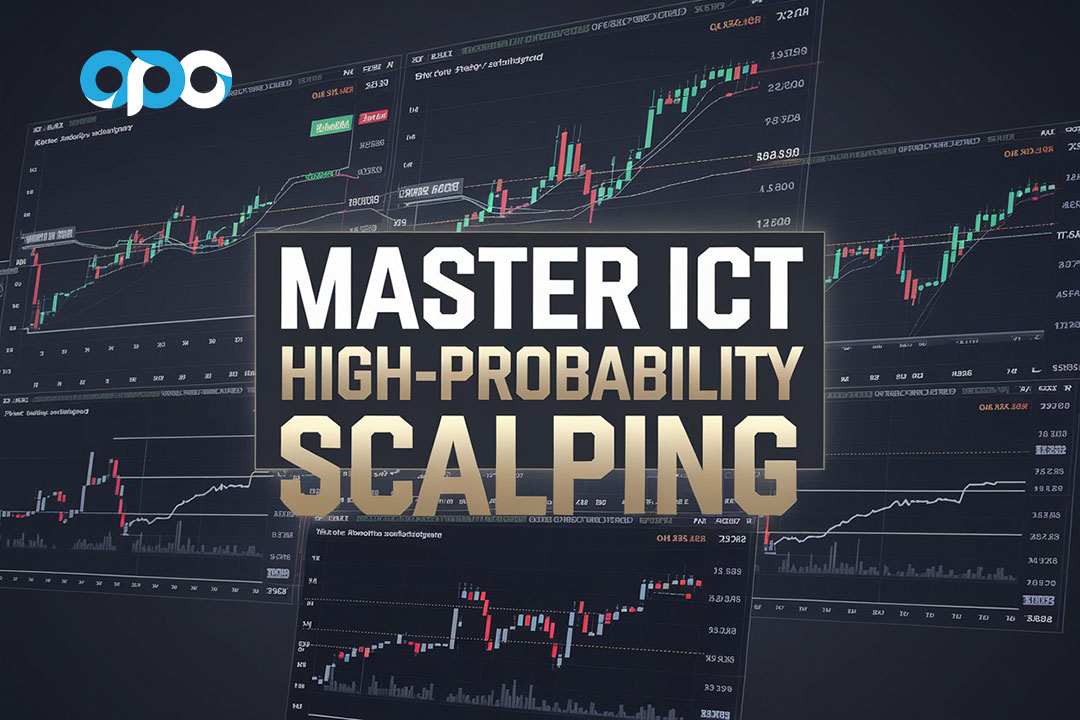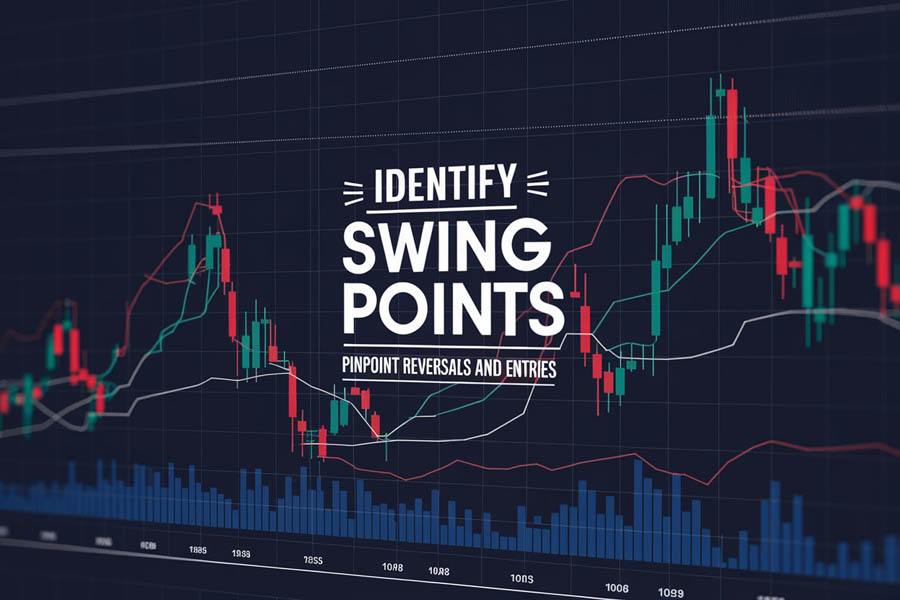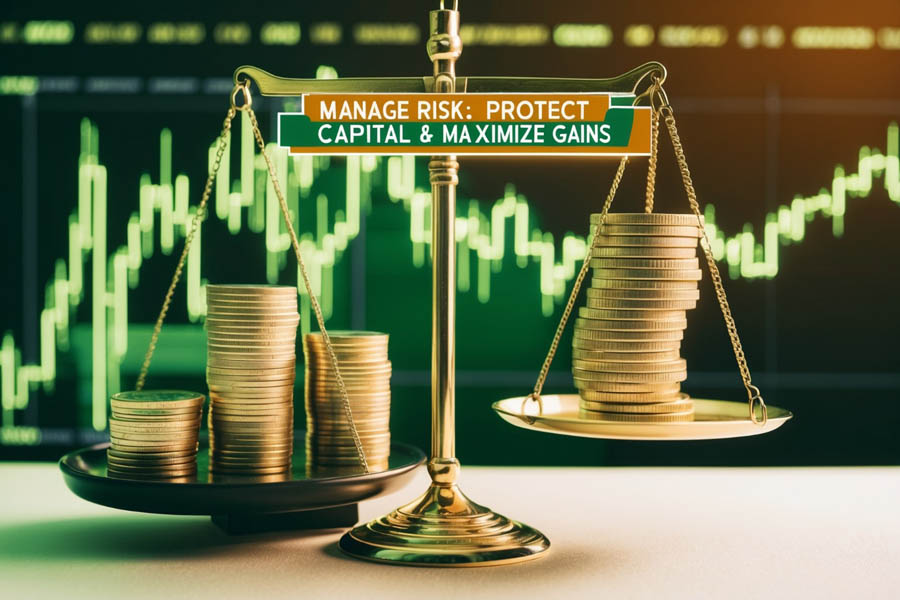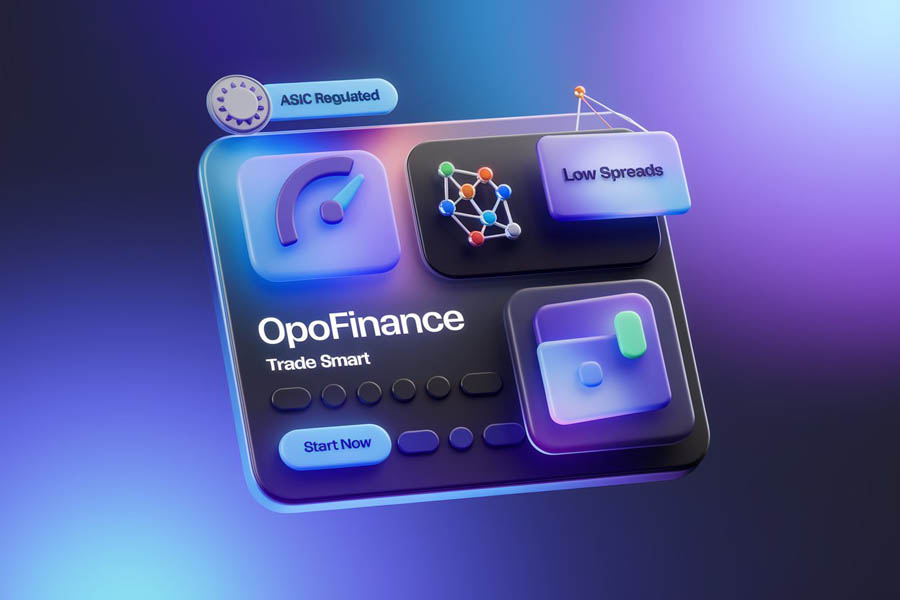Mastering ICT high-probability scalping is a critical skill for traders who seek consistent profitability in the fast-paced world of forex trading. This strategy revolves around making precise, high-conviction trades within short time frames, leveraging advanced technical analysis and a deep understanding of market behavior. By effectively applying ICT (Inner Circle Trader) concepts such as daily bias, liquidity runs, and optimal trade entries, traders can significantly increase their chances of success in the volatile forex market. This article breaks down the essential steps needed to master these strategies, offering practical guidance for implementing them in your trading routine.

One of the key elements in executing these strategies successfully is the choice of a regulated forex broker. A reliable broker not only provides a secure trading environment but also offers advanced tools, real-time data, and resources that are essential for high-probability scalping. Whether you’re a seasoned trader looking to enhance your current strategies or a beginner eager to learn the ropes, this comprehensive guide will equip you with the knowledge and techniques needed to excel in ICT high-probability scalping. By following these steps and partnering with a trusted broker for forex trading, you can navigate the forex market with confidence and work towards achieving your financial goals.
What is High-Probability Scalping in Forex Trading?
High-probability scalping is a fast-paced, precision-focused trading strategy that aims to accumulate small profits by exploiting minor price movements throughout the trading day. By applying ICT strategies, traders can pinpoint the most advantageous moments to enter and exit trades, manage risks effectively, and achieve consistent gains, even in volatile markets.
Why Choose High-Probability Scalping?
- Quick Returns: Capitalize on short-term market fluctuations for immediate profits.
- Reduced Exposure: Minimize risk by holding positions for a brief duration, thus limiting the impact of adverse price movements.
- Adaptability: Suitable for various market conditions and trading instruments, making it a versatile approach.
- Consistent Profits: Accumulate small gains that, over time, can lead to significant returns, ensuring steady growth of your trading account.
Ready to dive into the world of high-probability scalping? Let’s explore the top 7 steps that will revolutionize your forex trading experience.
Step 1: Analyzing Daily Bias for Informed Trading
Understanding the daily bias is the foundation of successful scalping. The daily bias refers to the general direction in which the market is expected to move over the course of a trading day. Aligning your trades with this bias significantly increases your chances of success.

How to Determine Daily Bias
- Review Previous Day’s Price Action: Analyze the prior day’s high, low, and close to gauge market sentiment. A bullish close suggests a potential upward bias, while a bearish close indicates a possible downward trend.
- Identify Key Support and Resistance Levels: Use historical data to spot crucial price levels that are likely to influence current market movements. These levels act as psychological barriers where the market might reverse or accelerate.
- Utilize Technical Indicators: Incorporate tools such as Moving Averages, RSI (Relative Strength Index), and MACD (Moving Average Convergence Divergence) to confirm the trend direction. A moving average crossover or a divergence in RSI can offer clues to the prevailing bias.
- Monitor Economic Calendars: Stay updated on upcoming news events that could impact market dynamics. Major announcements like interest rate decisions or employment reports can shift the daily bias dramatically.
By accurately assessing the daily bias, you position yourself to make trades that flow with the market’s natural momentum, enhancing profitability and reducing unnecessary risks. This step is crucial because it helps you avoid trading against the prevailing trend, which is often where many traders incur losses.
Step 2: Mastering Swing Highs and Lows Identification
Swing highs and lows are pivotal price points that indicate potential market reversals or continuations. These points are where the market changes direction, offering excellent opportunities for entering and exiting trades.

Steps to Identify Swing Highs and Lows
- Swing High: This occurs when a price peak is flanked by lower highs on both sides. It indicates a potential reversal from an upward trend to a downward trend.
- Swing Low: This occurs when a price trough is flanked by higher lows on both sides, suggesting a potential reversal from a downward trend to an upward trend.
Why Are Swing Highs and Lows Important?
- Entry Points: These points signal optimal moments to enter trades, especially when they align with the daily bias.
- Exit Points: They indicate when to close positions to maximize profits before the market reverses.
- Trend Confirmation: Swing highs and lows help validate the strength and direction of current trends. For example, if the market is forming higher lows and higher highs, it’s in an uptrend.
Mastering the identification of swing highs and lows empowers you to make timely and strategic trading decisions, capitalizing on market movements with precision. This skill is essential for executing trades that align with the market’s natural rhythm, thereby improving your overall profitability.
Step 3: Optimal Trade Entry Techniques for Maximum Profit
Entering trades at the right moment is essential for successful scalping. The goal is to enter a trade just as the market is about to move in your favor, maximizing your profit potential while minimizing risk.

Effective Entry Techniques
- Use of Fibonacci Retracement Levels: Fibonacci levels, such as the 38.2%, 50%, and 61.8% retracements, can help identify potential pullback areas where the price is likely to resume its trend. Entering trades at these levels, especially when they coincide with other signals like swing lows or highs, can significantly increase your success rate.
- Waiting for Price Confirmation: Rather than jumping into a trade at the first sign of a potential move, wait for confirmation through candlestick patterns such as pin bars, engulfing patterns, or hammer formations. These patterns provide visual confirmation that the market is likely to move in your desired direction.
- Leveraging Breakout Strategies: Enter trades when the price breaks through significant support or resistance levels, indicating a strong directional move. Breakouts often lead to sustained trends, offering excellent opportunities for scalpers.
- Employing Order Blocks: Order blocks represent areas where large financial institutions have placed significant orders, leading to sharp price movements. Identifying and entering trades at these levels can provide high-probability entry points, as the market often revisits these zones before continuing its trend.
Pro Tip: Combine multiple entry signals to increase the confidence and success rate of your trades. For example, a trade that aligns with the daily bias, occurs at a Fibonacci retracement level, and is confirmed by a candlestick pattern is more likely to succeed than one based on a single signal.
Step 4: Navigating Liquidity Runs and Market Dynamics
Understanding and exploiting liquidity runs is a critical component of high-probability scalping. Liquidity runs occur when the market rapidly moves to capture stop-loss orders placed by retail traders, creating opportunities for more experienced traders to enter at advantageous prices.

What Are Liquidity Runs?
- Liquidity Runs: These are rapid price movements designed to capture stop-loss orders or trigger pending orders, leading to short-term spikes or dips in price. Large financial institutions often cause these moves to create liquidity for their trades.
How to Navigate Liquidity Runs
- Identify Stop-Loss Clusters: Look for areas on the chart where retail traders commonly place stop-loss orders, such as just above or below key support and resistance levels.
- Monitor Volume Spikes: Increased trading volume, especially near key price levels, can indicate that a liquidity run is about to occur. Volume spikes often precede sharp price movements, offering clues to impending liquidity grabs.
- Watch for False Breakouts: False breakouts occur when the price momentarily breaks through a key level but quickly reverses. These are often driven by liquidity runs and can be exploited by entering trades after the initial fake-out.
- Align with Institutional Order Flow: Trade in the direction favored by major financial institutions. By analyzing order flow data or using advanced trading tools that track institutional activity, you can align your trades with the market’s biggest players.
By adeptly navigating liquidity runs, you can enter trades at advantageous prices and ride the ensuing market momentum for substantial gains. This approach allows you to exploit the market’s natural movements, turning potential threats into profitable opportunities.
Read More: Mastering ICT Stop Runs
Step 5: Effective Risk Management for Sustainable Trading
Protecting your capital is just as important as making profits in forex trading. Without a solid risk management strategy, even the most skilled traders can experience significant losses.

Key Risk Management Practices
- Set Strict Stop-Losses: Define clear exit points to limit potential losses. A stop-loss order automatically closes a trade when the market moves against you, preventing catastrophic losses.
- Determine Proper Position Sizing: Adjust trade sizes based on your risk tolerance and account size. For example, risking no more than 1-2% of your trading capital on a single trade is a common practice among successful traders.
- Maintain a Favorable Risk-Reward Ratio: Aim for setups where potential profits significantly outweigh risks, such as a 2:1 or 3:1 ratio. This means for every dollar you risk, you should aim to make two or three dollars in profit.
- Diversify Trading Strategies: Employ multiple approaches to mitigate the impact of unforeseen market movements. Diversifying your strategies reduces the likelihood of all your trades being affected by the same market conditions.
Did You Know? Traders who consistently apply sound risk management principles are more likely to achieve long-term profitability and trading success. Effective risk management is the cornerstone of sustainable trading, ensuring that you stay in the game even when the market moves against you.
Read More: Mastering ICT Risk Management
Step 6: Leveraging Trading Sessions for Optimal Opportunities
Different trading sessions offer unique opportunities and challenges for scalpers. Understanding the characteristics of each session can help you optimize your trading strategy.

Best Practices for Trading Sessions
- London Session: This session is known for high liquidity and volatility, making it ideal for executing numerous trades. It overlaps with the Asian and New York sessions, providing the best trading opportunities of the day.
- New York Session: The New York session is characterized by significant market movements and is particularly volatile during the overlap with the London session. It’s perfect for capitalizing on major news releases and economic data.
- Asian Session: This session is typically slower, with lower volatility. It’s best suited for traders who prefer a more relaxed trading pace or who specialize in trading currency pairs like AUD/JPY and NZD/USD.
- Session Overlaps: Trading during overlaps, such as the London-New York overlap, often leads to the most significant price moves and highest trading volume. This is when the market is most liquid, offering the best conditions for scalping.
By aligning your trading strategy with the most active sessions, you can increase your chances of executing successful trades and maximizing profits. Knowing when to trade is as important as knowing how to trade, especially in a fast-paced strategy like scalping.
Step 7: Continuous Learning and Strategy Refinement
The forex market is constantly evolving, and so should your trading strategies.
How to Continuously Improve:
- Keep a Trading Journal: Document and analyze all trades to identify strengths and weaknesses.
- Stay Updated with Market News: Regularly follow financial news and updates to anticipate market shifts.
- Engage with Trading Communities: Learn from the experiences and insights of fellow traders.
- Invest in Education: Participate in courses and webinars to expand your knowledge base.
Remember: Successful traders never stop learning and adapting. Embrace continuous improvement to stay ahead in the competitive forex market.
Unlock Your Scalping Potential with OpoFinance
To truly excel in high-probability scalping and elevate your trading game, partnering with the right forex broker is crucial. OpoFinance, an ASIC-regulated forex broker, stands out as an ideal choice for traders committed to success. With its robust regulatory framework, OpoFinance ensures a secure and transparent trading environment, giving you peace of mind as you implement your high-probability scalping strategies.

Why Choose OpoFinance?
- Regulated and Reliable: As an ASIC-regulated broker, OpoFinance adheres to strict regulatory standards, ensuring a safe and trustworthy trading experience.
- Advanced Trading Tools: Gain access to sophisticated trading platforms and analytical tools designed to support high-probability scalping strategies and enhance your market analysis.
- Social Trading Services: Take advantage of OpoFinance’s social trading features, which allow you to observe and replicate the strategies of successful traders. This valuable resource can provide additional insights and help refine your scalping techniques.
By choosing OpoFinance, you’re not just getting a forex broker; you’re gaining a partner dedicated to supporting your trading journey. Leverage their advanced tools and social trading services to fine-tune your strategies and achieve your trading goals with greater confidence.
Read More: Mastering ICT Smart Money Reversal
Conclusion
Mastering high-probability scalping using ICT strategies is a powerful way to achieve consistent profits in forex trading. By following the seven steps outlined in this guide, you’ll be well-equipped to navigate the complexities of the market, make informed decisions, and protect your trading capital. Whether you’re just starting or looking to refine your skills, these strategies offer a clear path to success.
Before concluding, remember that choosing the right online forex broker is essential for implementing these strategies effectively. A regulated forex broker with fast execution, tight spreads, and a reliable trading platform will provide the ideal environment for your scalping success.
What is the best time frame for high-probability scalping?
The best time frame for high-probability scalping depends on your trading style and market conditions. Generally, 1-minute to 15-minute charts are ideal for scalpers because they provide quick feedback on price movements, allowing for rapid decision-making. Shorter time frames, like the 1-minute chart, are excellent for catching minute fluctuations, while slightly longer time frames, like the 5-minute or 15-minute charts, can help you spot more substantial price trends and reversals.
Using the right time frame ensures that you can effectively capture and act on the minor price movements that define successful scalping.
How much capital is required for high-probability scalping?
While there’s no one-size-fits-all answer, starting with at least $500 to $1,000 is generally recommended. This amount allows you to absorb small losses while you refine your strategy without risking your entire account. It also provides enough capital to take advantage of leverage while maintaining proper risk management.
Starting with sufficient capital is crucial for managing the inherent risks of scalping, as it allows you to stay in the game long enough to master the strategy.
Can I scalp in a volatile market?
Yes, volatile markets can offer excellent opportunities for scalping because of the rapid price movements. However, volatile markets also carry increased risk, so it’s essential to employ tight risk management strategies. Tools like trailing stops and real-time alerts can help you capitalize on these opportunities while minimizing potential losses.
Volatile markets can enhance your scalping success, provided you remain vigilant and adaptable.







